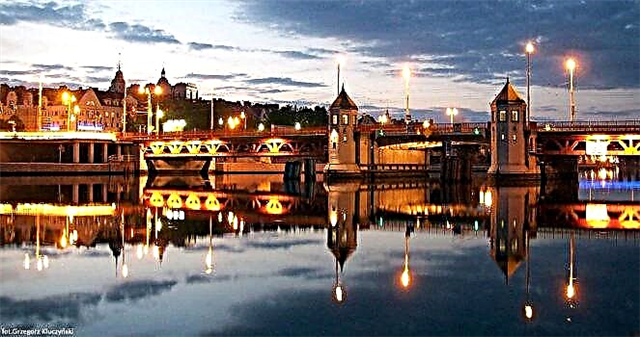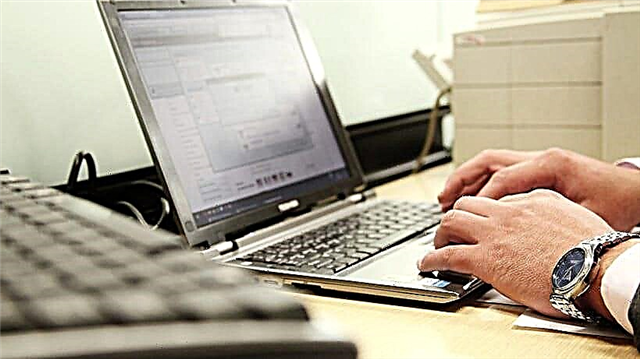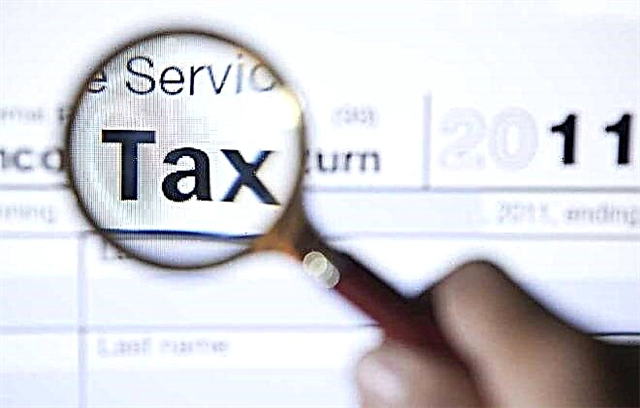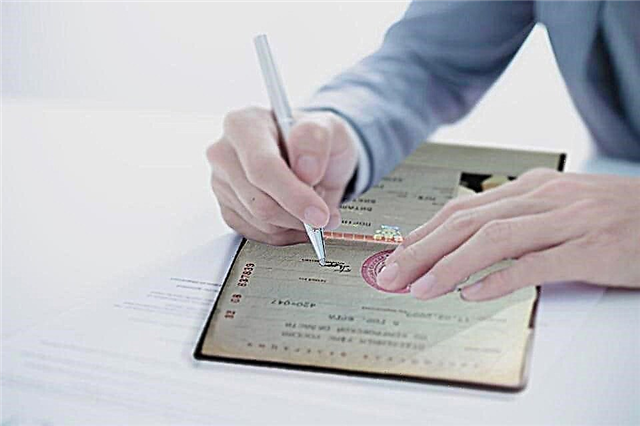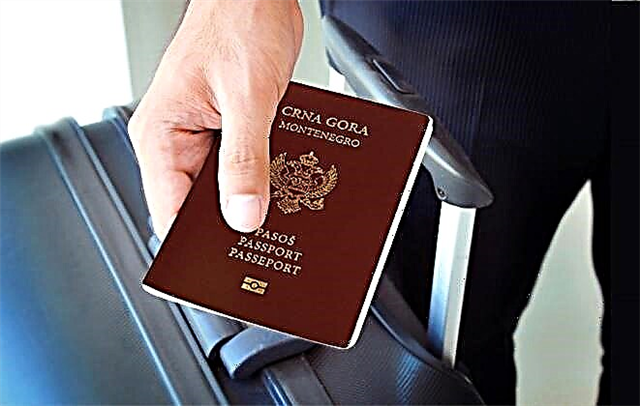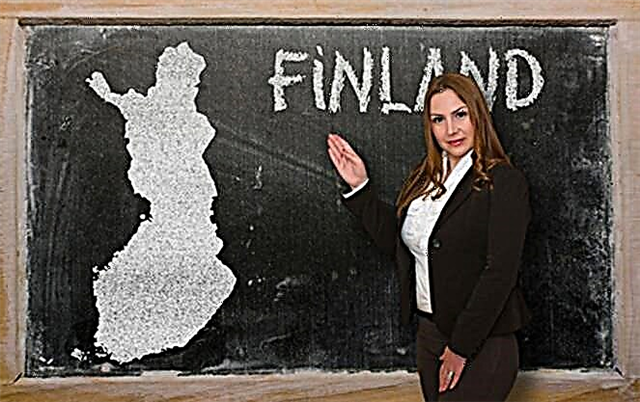The education system in Finland is internationally recognized and has long been associated with quality, innovation and affordability. The states that are in the process of reforming this sector are studying the experience of their Finnish colleagues with great interest and successfully applying it in practice. For Russians, studying in this Scandinavian country is also attractive because of the proximity of the territories. Let's try to figure out how the educational process in Finland works and why the diplomas of Finnish universities are so highly rated in the world.

Features of the organization of the Finnish educational system
Even 30 years ago, the Finnish education system was considered rather backward and was not an example to follow. Today her model is regarded as one of the most efficient in the world and worthy of inheritance.
Few people dare to criticize the principles of education implemented in this state. Any attempt to find flaws is broken by high ratings. So, for example, according to PISA (International Program for Student Assessment), over the past 10 years, Finland has confidently taken the top positions.
Moreover, even the most ardent opponents of the Finnish approach to learning recognize its main characteristic - relaxed (relaxation).
The educational process is based on the principle borrowed from China, more precisely, in the art of martial arts - a relaxed concentration of attention.
In other words, to be effective, you need to be relaxed. Tension is stress that forces a person not to develop, but to survive.
The Finnish education model is based on the following principles:
- Equality (schools, students, subjects, teachers, parents, the rights of all participants in the process).
- Free base.
- An individually tailored program for each student.
- Practicality - only those subjects that are really useful in life are included in the school curriculum.
- Trust at all stages of training.
- Voluntariness.
- Independence.
The education process is divided into several stages:
- preschool;
- comprehensive school;
- secondary educational institutions;
- universities.
The languages of instruction are Finnish and Swedish. In the northern part of the state, a regional dialect may be added to them. The study of each of the stages will allow to identify the pros and cons of the Finnish approach to the learning process.
What children do in Finland before school
A Finnish family can send a child to a kindergarten from 9 months. The educational process lasts up to 6 years. All gardens can be divided into three groups:
- municipal;
- private;
- family type.
The choice of a preschool institution remains with the parents. This level of education is paid. The amount of contributions is determined by the level of income in the family. The highest payment is 250 euros, the lowest is 23 euros.

Features of the preschool stage:
- sometimes there are not enough places in kindergartens for all the kids. In this case, the authorities pay the family € 500 a month so that one of the adults can stay at home with the child;
- the groups in the kindergartens are small, and the younger the group, the more educators are involved in it. On average, there are 4 children per teacher;
- the main task of teachers at this stage is caring for kids and helping parents in their upbringing.
At the age of 6, the preparation of children for school begins. Classes are held at kindergartens or schools. Attending them is mandatory even for those children who did not go to kindergarten. Payment at this stage is not provided.
Secondary educational stage
School education lasts 9-10 years and consists of two levels. The beginning of the school year in Finland falls in August - from about the 8th to the 16th (there is no single day for all). The end of the educational process falls on May.
There are 4 periods of school holidays during the year:
- 3-4 days in the fall;
- 2 weeks at Christmas;
- 1 week in February;
- 1 week for Easter.
Schoolchildren study only in the first shift with weekends on Saturday and Sunday. On Friday, the Ministry of Education set a short day for schools.
Finnish schools are not divided into elite and ordinary - all have the same technical capabilities and funding.
Classification is possible only by the form of ownership:
- state;
- private;
- private-public.
When admitted to an educational institution, the school administration is prohibited from entering data on the place of work of parents and their position in the form.

Schooling is free of charge. In addition, no fees are paid for meals, excursions, transportation (if there is a school bus), stationery, textbooks, tablets.
A 10-point scale is used for assessment. At the same time, up to the 7th grade, students receive only a verbal characteristic for their answers and completed assignments: good, satisfactory, mediocre, excellent.
In the lower grades (from 1st to 3rd), it is not accepted to assess knowledge in any form.
All schools have an electronic Willa system. With individual access to it, parents can monitor the progress of their children.
In this virtual diary, all the points received by students are displayed, their progress is noted, omissions, comments of a psychologist, doctor, teachers are entered. In general, assessment is purely formal here and is used only to motivate the student. Neither the rating of the school, nor other indicators of the assessment do not affect.
Primary school education begins at the age of 7. For the first two years, kids study only 4 subjects:
- reading;
- mathematics;
- native language;
- natural history.
All classes are held in the same room with the same teacher. Physical education is a separate subject. Particular attention is paid to the development of the creative potential of students. Every year the number of subjects increases, and by the 6th grade, children already have key knowledge in all general subjects.
The transition to 7th grade marks the beginning of high school. The subjects here are already taught by different teachers. The process takes 3 years, and students can add additional ones to the main subjects at their discretion.
Education in gymnasiums
The gymnasium is an alternative to high school. A student can choose an educational institution independently. Currently, there are 441 gymnasiums in Finland, the total number of students in them is 130 thousand people.
Training at this level is also free. The state pays for everything from travel and meals to educational materials.

The only thing that students should be ready for is a heavy workload and serious study, since the gymnasium is a kind of preparation for entering a university. Upon completion of this stage of training, final exams are to be passed.
Secondary vocational schools
The Department of the Education System has provided another alternative education option for high school students - secondary vocational schools. There are 334 of them in the country, the total number of students in them is 160 thousand people.
Selection to educational institutions of this type is carried out according to the average school score. Their graduates receive special education in a specific profession. Duration of training is 3 years. You can master a profession in almost any industry: agriculture, sports, art. Upon graduation, you can apply for admission to the university. After passing the final exams, students can choose any university in the country.
Getting higher education
Higher education institutions in the country are divided into two types:
- universities;
- polytechnic institutes.
The process of obtaining a specialty in higher education is high-quality, modern, giving students confidence in the relevance of their future profession.
At universities, you can get a diploma in education in all branches of the economy, social sphere and management.
It should be noted that the focus of each university is as close as possible to the needs of the region in which it is located.
One of the most popular is the maritime education, which allows you to find a prestigious, well-paid job.
Polytechnic institutes provide knowledge in all areas of applied sciences. They differ from universities in a large number of practical classes, starting from the first year of study.
In universities in Finland, you can get the following scientific degrees:
- bachelor's degree - awarded after 3-4 years of study at any university in the country. In some departments, a thesis is required, in most cases an in-depth study of several subjects will be required;
- Master - requires 2 more years of study. Graduates of "polytechnics" are required to work for three years in the acquired specialty;
- Doctor of Sciences - obtaining a degree takes 4 years of study and involves writing a scientific work and defending a dissertation.
In the middle of their studies, students receive a licentiate degree, which has no analogues in other European countries.
Teaching at universities is carried out in Swedish and Finnish. For foreigners, separate programs in English are offered. In 2021, receiving higher education on a free basis is possible for both residents and students from other countries. Education in English-language programs from 2021 is paid.

Information on the conditions of admission is contained on the official website of each individual institute and university. Acceptance of documents mainly takes place from the beginning of winter to the end of March. An obligatory requirement is passing an English proficiency test.
Admission of applicants to some universities is carried out on the basis of entrance exams, in others, a fairly routine interview and an average graduation score. If the process is successful, the candidate will receive an invitation from the educational institution. You will need this document to apply for a student visa at the Finnish consulate.
Education for children with special needs
The basic principle of Finnish education can be formulated as follows: “School for everyone”. Inclusive education, which can be received by all children on an equal basis and free of charge - these are the postulates that the country's authorities adhere to. Based on this, the state grants the right to every citizen of the country to study at any level of education, regardless of his place of residence and physical characteristics.
Children with special needs receive everything they need for a successful educational process:
- mobility equipment;
- personal assistant;
- sign language interpreter, etc.
The teaching methodology provides an individual approach to teaching each individual student. Upon reaching the age of five, all children undergo a psychological and pedagogical examination, which allows them to determine what kind of adaptation support they need at school - general, intensive or special.
Is it possible to count on a scholarship or grant
Almost all Finnish universities provide scholarships to those who study on a fee basis. Usually it is enough to fully or partially cover the tuition fee, and sometimes also to pay for the dormitory and transportation costs.
For example, the University of Lahti offers its students a scholarship of 50% of the first year tuition fees. Those who successfully completed the first year of study have the opportunity to extend payments for the entire period of study.
And at the University of Tampere, scholarships and grants are awarded only to excellent students. For them, one hundred percent coverage of the costs of tuition fees and an amount of 7,000 euros per year are provided for paying for housing.
To receive help from a university, you must fulfill one of the following requirements:
- demonstrate excellent academic performance;
- have a scientific project in development;
- need the support of the university due to material or other reasons.
Sometimes the academy or university grants payments to individual students for a special contribution to the life of the university.
Job search prospects
Most universities provide assistance to graduates in the employment process. To do this, at each educational institution there are special centers where you can take additional courses, master the skills of interviewing, and obtain information on open vacancies.

Those, whose internship and practice took place in a large company, have many chances of successfully finding a job. Having proved itself well, you can receive an invitation for further cooperation.
Finnish employers are willing to hire graduates who speak Russian. However, it should be borne in mind that knowledge of English alone will not be enough to get a prestigious position - at least you will have to learn Finnish or Swedish.
In Finland, such a direction as education for adult students who want to improve their qualifications or, possibly, in the future emigrate to this country, is actively developing. If there is a job for a graduate after graduation, it will not be a problem to extend the residence permit.
Summer training
Summer schools for students and those who are just about to become one are an excellent opportunity to learn in real conditions what the Finnish education system is like. Almost every university in the country offers students of foreign universities and schools to take summer intensive courses in a variety of areas. Those who wish may be interested in the following programs:
- Summer School at the University of Jyväskylä - invites students from partner universities (St. Petersburg State University, Russian State Pedagogical University, Yaroslavl State University and others). Directions: culture, psychology, health and sports;
- School at the University of Eastern Finland - for students of philosophy, faculties, departments of forestry, health care, natural sciences;
- Lahti summer camp - organized annually for everyone who is concerned about environmental problems.
Linguistic knowledge can be obtained in language schools, which also function at almost all universities. Courses at the University of Helsinki are very popular. Fifty-two lessons will cost you about € 180. The duration of the course depends on the chosen program. The fast track can be completed in 2 weeks. If you have time, you can stay here for 1 year.
Outcomes
The Finnish approach to the learning process is today an example to follow, which many world educational systems are trying to implement. Here they are guided by the principle of equality and accessibility of education, demonstrating an individual approach to each student. Only the preschool level of education is paid. Even higher education can be obtained here for free if you choose programs in Swedish or Finnish.

